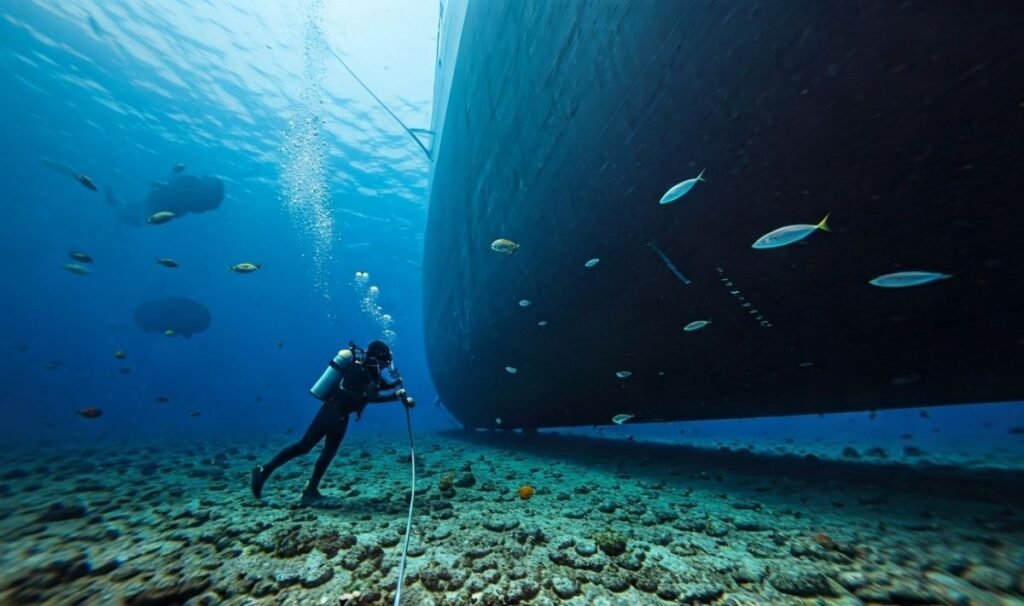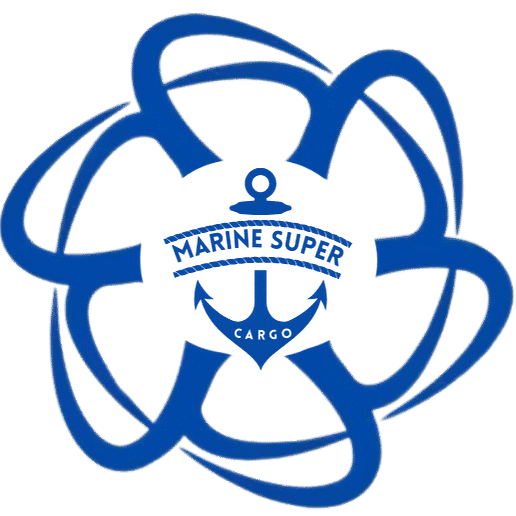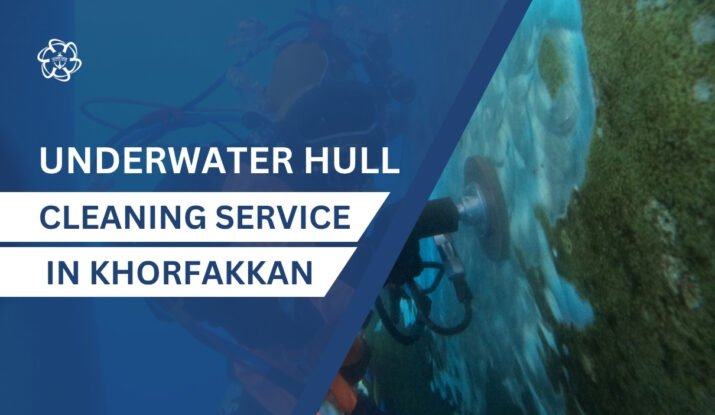Let’s face it—slow ships don’t cut it in today’s fast-paced maritime industry. Every knot of speed and every drop of fuel matters. That’s where underwater hull cleaning in Khorfakkan plays a vital role. Over time, marine growth like barnacles, algae, and bio-slime clings to the ship’s hull, increasing drag, reducing speed, and driving up fuel consumption. Worse yet, it can lead to regulatory issues and costly delays. Regular hull cleaning isn’t just maintenance—it’s a smart investment that boosts efficiency, saves fuel, and ensures your vessel remains in top operational condition while staying compliant with port and environmental standards.
What Makes Khorfakkan a Key Maritime Hub?
Khorfakkan isn’t just a scenic port town on the UAE’s east coast—it’s a strategic anchor for global shipping. With direct access to the Arabian Sea, it’s one of the few natural deep-water ports in the region. Ships from Asia, Africa, and Europe stop here to refuel, restock, or undergo essential maintenance. And in such a high-traffic zone, underwater hull cleaning in Khorfakkan is not just optional—it’s vital.
The Science Behind Marine Fouling
Marine fouling is nature’s way of slowing you down—literally. When a ship spends time in seawater, organisms like barnacles, mussels, seaweed, and bacteria begin to attach to its underwater surface. This buildup causes increased friction, reduced speed, and up to 30% more fuel consumption. Worse? It can corrode your hull and damage your paintwork. So if you’re ignoring the marine gunk clinging to your hull, you’re throwing money into the ocean.

Why Underwater Hull Cleaning in Khorfakkan is Essential
Now, let’s zoom in on Khorfakkan. With the hot, nutrient-rich waters of the Gulf of Oman, marine growth happens faster here than in many colder regions. A vessel idling just a week in port can already start showing signs of biofouling. That’s why underwater hull cleaning in Khorfakkan has become a priority for shipping companies wanting to maintain operational excellence.
Plus, if you’re not meeting international standards like those set by IMO (International Maritime Organization), you might face heavy scrutiny. That’s where regular, professional cleaning steps in as your ship’s superhero cape.
Methods Used for Underwater Hull Cleaning in Khorfakkan
Gone are the days of sending a guy down with a wire brush and some prayer. Hull cleaning has gone high-tech, and here’s how it’s done:
Manual Brushing
It’s still used in some shallow or tricky areas where machines can’t reach. Divers use handheld brushes to remove soft and hard growth from the hull.
Hydraulic and Pneumatic Tools
These tools come with rotating brushes and scrapers powered by hydraulic or air pressure. They’re faster, stronger, and safer—especially for larger vessels.
High-Pressure Water Jets
This method uses jets of water at incredible pressure to blast off barnacles, algae, and other unwanted guests without damaging the hull’s coating. It’s ideal for eco-conscious shipping lines.
Choosing the Right Time for Cleaning
Not all hull cleanings are created equal, and not all times are ideal. The best time to schedule underwater hull cleaning in Khorfakkan is either right before or after major voyages, or when your ship is docked for refueling and supplies. Avoiding peak marine growth seasons (like summer) can also help reduce buildup in the first place.
Environmental Regulations in Khorfakkan
Khorfakkan Port falls under the UAE’s strict maritime environmental rules. Hull cleaning operations must ensure that the removed debris and marine life aren’t dumped back into the sea. Proper filtration and disposal systems are a must. This ensures marine life stays healthy and your ship stays compliant.
So, always choose a company that uses eco-friendly practices and has clearance from the port authorities.
How Clean Hulls Improve Performance and Save Fuel
Here’s where it gets interesting. Clean hulls are like clean sneakers—they make you run faster. Ships with freshly cleaned hulls can improve speed by up to 5 knots and reduce fuel use by 15–25%. Over long voyages, that can save thousands of dollars in operational costs. And in today’s world of carbon credits and ESG (Environmental, Social, Governance) standards, that’s a win-win.
Role of Certified Divers and Equipment
This is not your average pool-cleaning gig. Underwater hull cleaning in Khorfakkan involves trained commercial divers certified to work in marine environments. These divers use advanced gear like communication helmets, underwater cameras, and GPS-tracking to ensure every inch of your hull is inspected and cleaned. That’s peace of mind you can’t DIY.
Choosing a Reliable Service Provider for Underwater Hull Cleaning in Khorfakkan
Not all hull cleaning companies are created equal. When choosing a provider in Khorfakkan, ask about:
- Certifications (IMCA, ADCI, ISO)
- Equipment standards
- Response time and availability
- Eco-friendly practices
- Track record with large vessels
A reliable name like CleanShip.co, for example, is known for combining expertise, top-tier equipment, and 24/7 availability in Khorfakkan and beyond.
Conclusion
At the end of the day, underwater hull cleaning in Khorfakkan is more than a chore—it’s a strategic move. It boosts performance, saves fuel, ensures compliance, and protects our oceans. Whether you’re running a massive cargo carrier or a mid-sized commercial vessel, staying on top of hull hygiene isn’t just good practice—it’s essential.
So next time your ship pulls into Khorfakkan, don’t just think about unloading or bunkering. Think about scrubbing off those freeloading barnacles, too.
FAQ:
Q1. How often should hull cleaning be done in Khorfakkan?
Typically, every 3 to 6 months, depending on the vessel’s activity and time spent at sea.
Q2. Is Underwater Hull Cleaning in Khorfakkan allowed while a vessel is docked in Khorfakkan?
Yes, but only with approval from port authorities and following strict environmental protocols.
Q3. What are the risks of skipping hull cleaning?
You risk slower speeds, higher fuel use, hull corrosion, and possibly even regulatory fines.
Q4. How long does a typical hull cleaning session take?
Anywhere between 4 to 12 hours, depending on the vessel size and level of fouling.
Q5. Can hull cleaning damage the ship’s paint or coating?
When done professionally with the right tools, no. Certified companies use techniques that clean without harming the antifouling paint.


